Poverty, violence, and cultural traditions oppress millions of girls around the world, but some are finding hope through education.
Sierra Leone is one of the worst places in the world to be a girl. In this West African country of about six million people, cleaved by a vicious civil war that lasted more than a decade and more recently devastated by Ebola, simply being born a girl means a lifetime of barriers and traditions that often value girls’ bodies more than their minds. Most females here—90 percent, according to UNICEF—have undergone female genital mutilation (FGM), which initiates them into adulthood and is supposed to endow them with marriage appeal, but also is a culturally ingrained way of controlling their sexuality. Nearly half of all girls marry before age 18, and many become pregnant much younger—often a couple of months or so after their first menstrual cycle. Many are victims of sexual violence; rape often goes unpunished. In 2013 more than a quarter of girls 15 to 19 years old in Sierra Leone were pregnant or had children, one of the highest pregnancy rates in the world for that age-group. And too many die in childbirth—at a rate that is the highest in the world, according to an estimate by the World Health Organization and other international agencies. FGM can increase the risk of childbirth complications.
“If you go to the provinces, you see 13-year-olds, 15-year-olds, married, carrying babies,” says Annie Mafinda, a midwife at the Rainbo Center, which assists victims of sexual violence in the capital city of Freetown. Many of the center’s patients are 12 to 15 years old, Mafinda says.

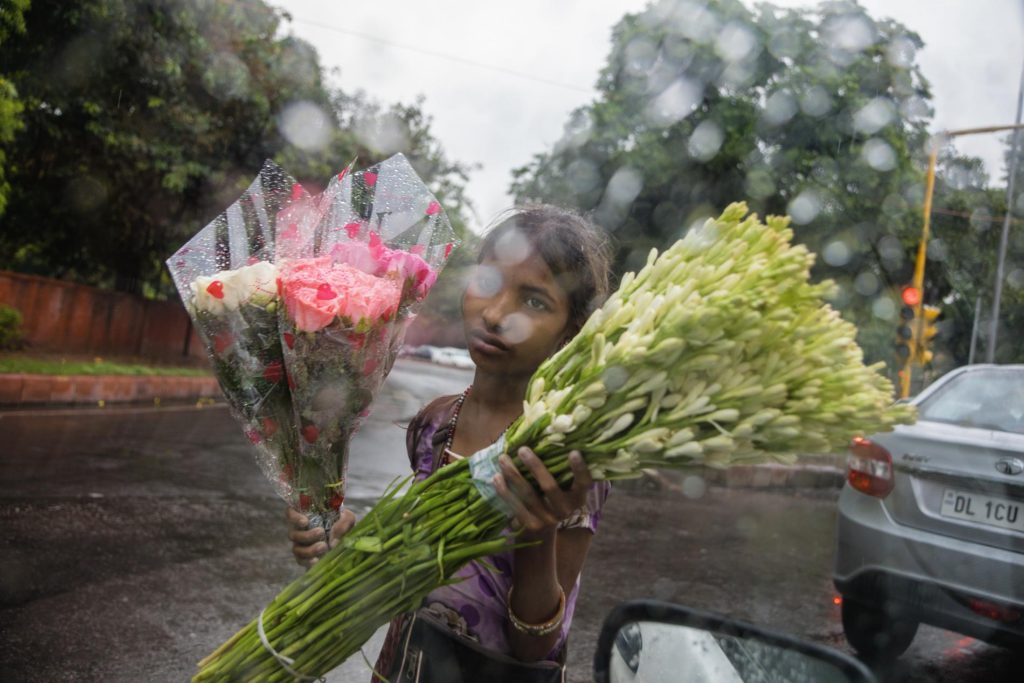
When I met Sarah in Freetown, a city that rests on a hilly peninsula with a glimmering harbor, she was 14 years old and six months pregnant, but she looked several years younger. Sarah had a whisper of a voice, a small, delicate frame, red-painted toenails, and a pale peach head scarf tied tightly around her hair. She told me she had been raped by a boy who lived near her family’s home and who left town after the alleged attack. When her mother learned of the pregnancy, she kicked Sarah out of the house. Now Sarah (her last name is being withheld) lives with the mother of the boy who she said attacked her. The mother of her alleged rapist was the only one who would take her in; Sierra Leonean women typically live with their husbands’ families. Sarah has to cook, clean, and do laundry for the household. The boy’s mother beats her if she’s too tired to do her chores, Sarah said.
With so many obstacles in Sierra Leone, how is a girl like Sarah to live—and thrive?
From our partners:
In a poor country run by a government that seems to have little will to protect girls, the wisest thing they can do is try to escape the station in which they were born. Amid all the threats, school can be their only refuge. Education is a challenge because of the fees, but it is also a source of hope. A high school degree can give them more economic freedom and a chance to forge their own lives, perhaps by enabling them to attend a university or get jobs that require more skills.
Yet one estimate says that only about one in three girls attended secondary school between 2008 and 2012, and pregnancy is among the biggest hurdles. Sierra Leone’s ministry of education banned pregnant girls from attending school. The intent of the policy, which was formalized by the government in 2015, is to prevent them from influencing their peers and to protect them from ridicule.
Sierra Leone’s ban on pregnant girls in school “is a knee-jerk, old-fashioned morality, and it’s the wrong statement to make,” says author Aminatta Forna, who started a small village school here in 2003. “These are vulnerable young girls, and there is a lot of predation on young girls in Sierra Leone.” Elizabeth Dainkeh was coordinator of an education center in Freetown for school-age pregnant girls and mothers that was supported by UNICEF, along with Sierra Leone’s education ministry and others. “When you become pregnant, they put you aside,” she says. Dainkeh stands at the back of a steamy classroom where girls in braids and bright head scarves, some cradling infants, fan themselves with their workbooks as they listen attentively to the teacher. “I thought they would be ashamed [to return to school], but they are happy to be here,” she says, with obvious pride. Dainkeh herself was pregnant at 17; her father threw her out of the house. Her daughter died of malnutrition before turning one. Now 35, she advises her students to persevere: Put those lost years out of school behind them and forge ahead.

Mary Kposowa, former head of one of these centers for girls, says some of her graduates had encountered trouble reenrolling in regular schools after they had their babies. Making matters worse, in August 2016 the centers for pregnant girls closed; UNICEF says they were intended to be a “bridge” after the Ebola crisis shut down schools across the country for nine months. About 14,000 girls who were pregnant or were new mothers registered at the schools, so Dainkeh fears that the country now will have “a large number of girl dropouts.”
Sierra Leoneans frequently say the roots of their country’s trauma began with the civil war between rebel groups and the government. For more than 10 years, beginning in 1991, thousands of girls and women were raped. Tens of thousands of people were killed, and more than two million people were displaced. More recently Ebola ravaged the country, taking about 4,000 lives in less than two years. The disease affected many families, leaving girls orphans and forcing them to become the caretakers of their siblings before they knew how. The country has shakily evolved into a democracy, but the oppression of its girls and women persists.
“The country does not care about the bodies, the lives, the spirit of young Sierra Leonean women,” says Fatou Wurie, a women’s rights activist in Freetown who grew up overseas, then returned to her native country. “Every policy we create does not include the young Sierra Leonean woman’s voice.”
As a woman who has spent extended time in much of West Africa, I had a strong reaction to visiting Sierra Leone for the first time. I have been in Nigeria, Ghana, Senegal, and the Ivory Coast, but Sierra Leone felt different: less inviting, less exuberant, more guarded and uneasy. But I also found that even in this troubled country, some girls are finding ways to rise above it all.
Regina Mosetay is sitting in the library of her school in Freetown. Outside, her classmates are laughing and eating lunch in the courtyard. She is as ready as she can be for her final exams. A mother at the age of 17, Regina can’t study like she used to because she has to care for her daughter, Aminata, squeezing in time with her books between feedings and changing diapers.
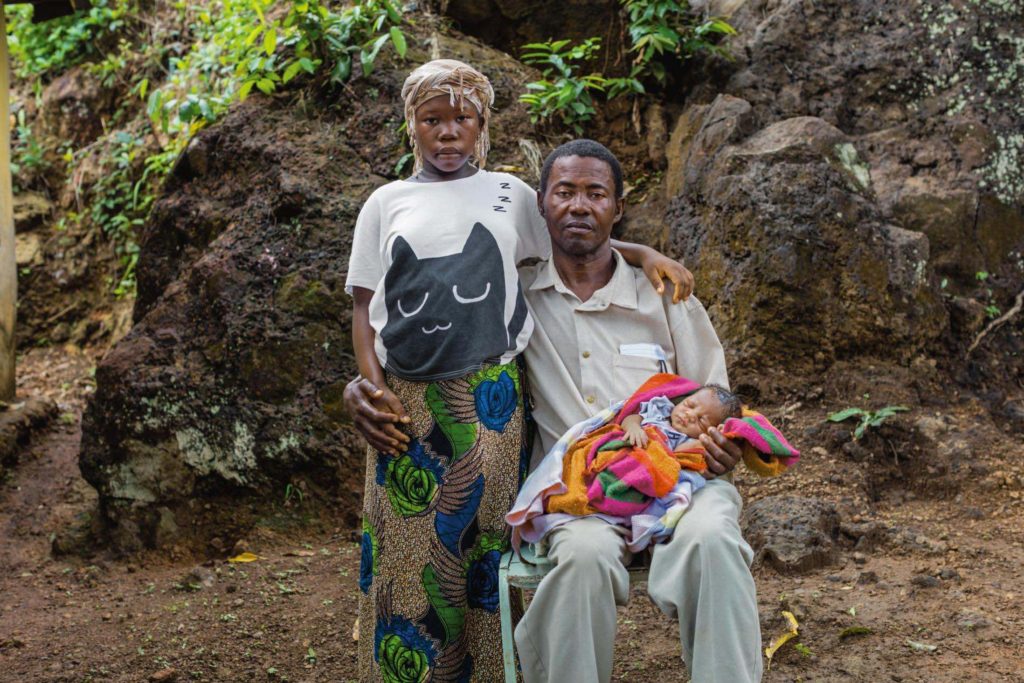
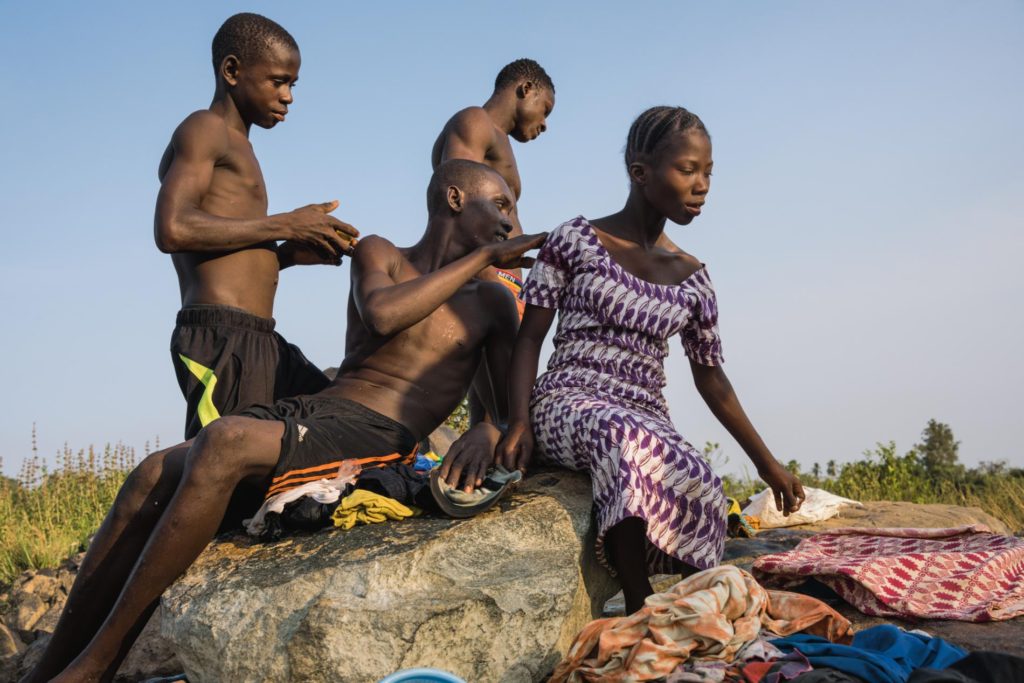

Regina has almond-shaped eyes and an oval face that tilts up when she is considering something. She grew up in Low Cost, a working-class area with slim streets crowded with pedestrians and edged with electronics and textile shops and food vendors. Her mother raised her along with her brother and sister in a house shared by her grandmother, cousins, uncle, and other family members, 11 of them in all.
She was kicked out of school because she was pregnant, which was “really painful,” she says. She loved everything about school. English was her best subject (she likes to talk), and she twirled baton in the marching band. She never thought she would become one of Sierra Leone’s pregnant teenagers. Then Ebola began to spread in Freetown in 2014, and the government closed schools to limit the epidemic. That’s when she got pregnant by her boyfriend, Alhassan, in 2015. Alhassan was in his final year of college at the time. “During Ebola,” she says, “there were a lot of girls who were pregnant. There was no school, so we had a lot of idle time.”
“I felt everybody would be disappointed in me. I felt shame,” Regina says. “Some students said we were not good examples for them.” By spring she was stuck at home with nothing to do and no one to see while her friends were at school. Several months later one of her aunts told her about the new centers that give school-age pregnant girls and mothers a way to catch up on their studies so they can ultimately return to school. Regina immediately wanted to go, and she told every pregnant girl or new mom she knew about the centers.
She was familiar with a lot of what was taught, but she relished being in a classroom again, sitting at a wooden desk with her books and notebook open in front of her, reading and listening and thinking. There was now a baby inside of her, yes, but she still had a mind, and that was everything to her.
“I was happy just being there and not at home idle,” Regina tells me. She studied at a center for three months, one of 180 girls who spent varying amounts of time there during the program’s first year. She returned to public school a month after giving birth to Aminata in December 2015. Now that she’s back, Regina warns all of her girlfriends to be careful around boys or the same thing will happen to them.
She’s no longer a dropout. “I don’t want my child to have the same experience that I had. I want a better future for her,” Regina says. She lives with her boyfriend, who graduated with a business degree, and his mother and grandmother, who help care for Aminata. She hopes they can build a family together and knows that finishing her education is crucial. She wants to work for an organization that helps children, especially girls, have better lives.
“When I’m educated, I’ll be able to take care of my family; I will take care of myself,” she says.
Salmatu Fofanah lives on the side of a hill in Mountain Cut, a Freetown neighborhood teeming with people. Salmatu, 17, is shy and lovely, with bright eyes and a slender figure. She has grown used to taking care of herself. Both her mother and stepfather contracted Ebola two years ago, her stepfather falling ill after attending a funeral in 2014. (Her biological father died of malaria in 2011.)
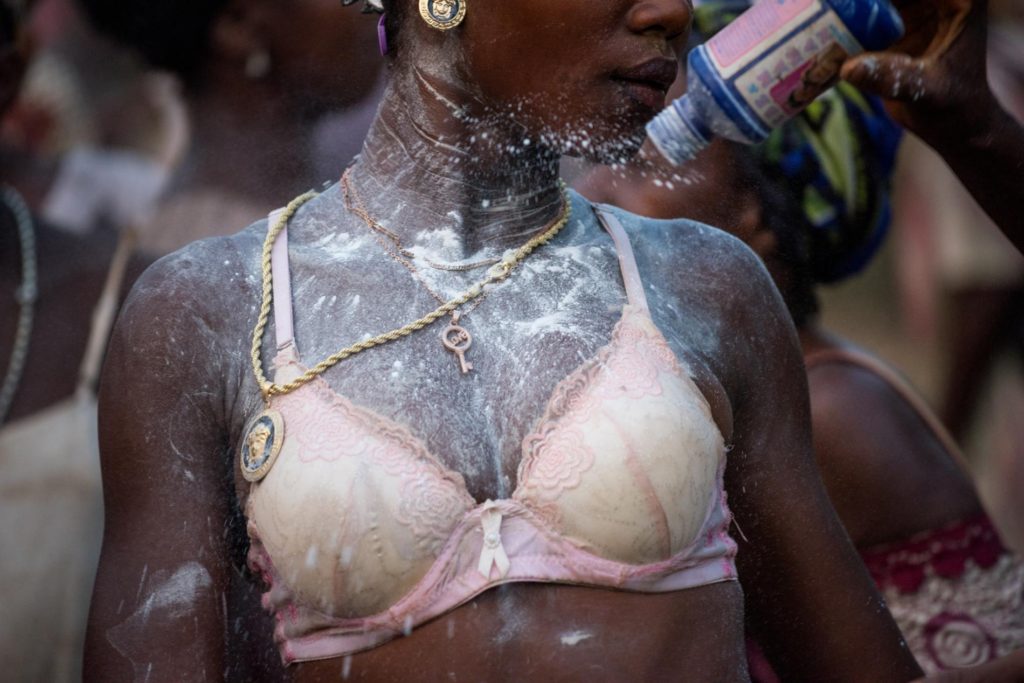

Salmatu’s mother, a nurse, treated her husband at home. They had no idea Ebola was spreading. Once his health worsened, her mother finally tried to take him to the hospital, but he died in the car.
Her mother fell sick within a few days and died at home a month later. Then Salmatu started feeling sick. She had a headache and a fever, and so did her aunt, uncle, older sister, brother, grandfather, and several cousins.
“All of us were afraid,” Salmatu tells me. They all checked into a treatment center. Only she and three of her cousins survived. Everyone else died.
In early December 2014 she returned, shaky with nausea and grief, to live with her other aunts, uncles, and cousins in a roomy house in Mountain Cut. Whenever she felt sick, she panicked. When she returned to school in March, she was afraid of being excluded by her friends because of the Ebola. But she was surprised.
“I was not stigmatized at all,” she says. Whenever her mind wanders to how life was before Ebola, her friends try to cheer her up. Salmatu goes on Facebook and WhatsApp to look at jokes, just to laugh again, and the more she sleeps, the better she feels. She attends a counseling group where she can talk about her troubles. “I like to say whatever is bothering me; it makes me lighter,” Salmatu says. When I met her, final exams were her biggest worry. “You have to let the past be and focus on the future. You have to be happy with what you have.”
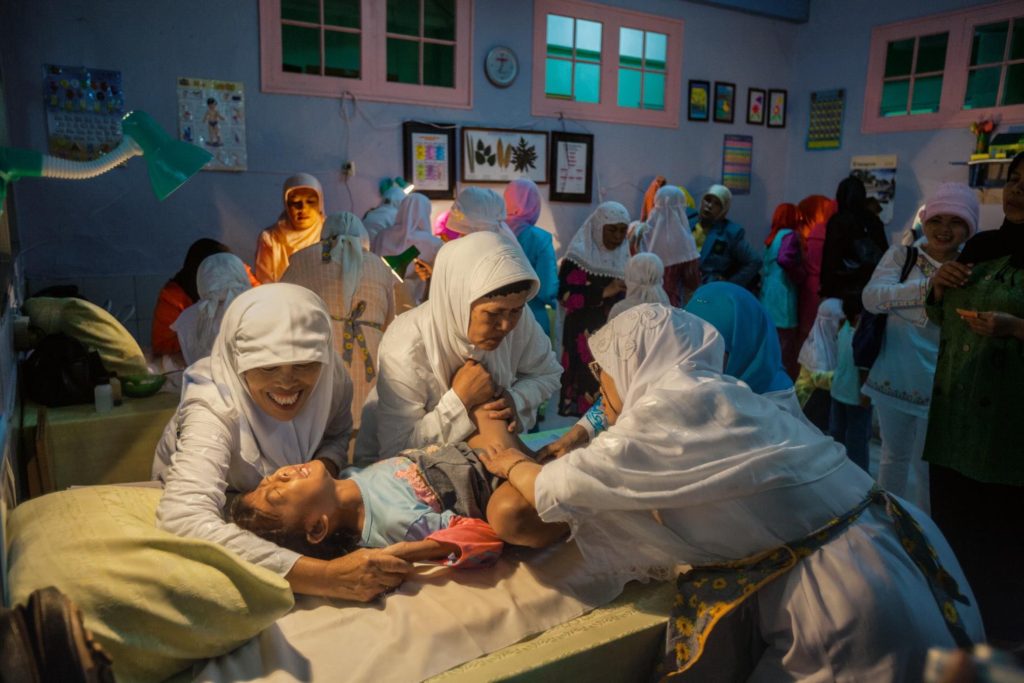
Salmatu’s favorite subject in school is history; she likes hearing the stories of her people and her country, and she hopes to be a journalist one day. She has a boyfriend who just finished high school, but Salmatu won’t let him pressure her into doing anything she doesn’t want to do. She wants to keep singing and going to the beach with her friends.
Sometimes she feels too lazy to go to class. (“I like to sleep, it’s my hobby,” she says, smiling. Whenever her temper flared as a child, her mother sent her to sleep and that made her feel better.)
But then she remembers what she wants to accomplish. Her mother died for her family. How can she not finish school and lead a life that would make her mother proud?
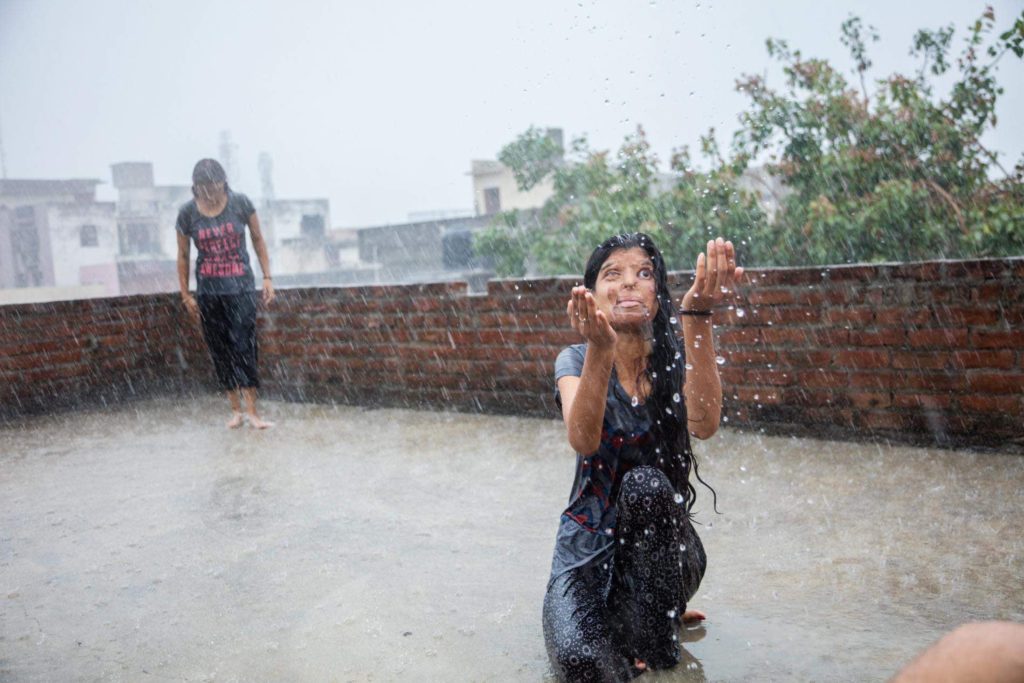
Kadiatu Kamara, or KK, as she is known, was born in a coastal village called Bureh, on the Atlantic Ocean. She is a tough force of energy, with a sprinkle of stars tattooed on her neck. She has lived here all her life, and her parents raised her, four brothers, and a sister in the close-knit community. Her parents sold coal collected nearby to support the family. After her father passed away when she was young, things became difficult. Her mother, Baby, struggled, still struggles, to make enough money and could afford to send only two of her children to school: KK and an older brother.
Now 19, KK is the youngest of her siblings and has always gravitated to places where she can feel like she belongs. She lives with her mother and other family members, so she craves space of her own. Four years ago, when a surf club started up on the beach, full of young guys from her village, she wanted to see what surfing would be like. She had only seen people surfing in the magazines that foreign tourists left behind at the beach.
The ocean is therapeutic for KK. When she gets in the water, she feels freer, more at ease.
“When I’m surfing, I feel like I’m in another country,” KK says. When she started out, she could barely swim. The leash tied to her ankle once snapped, and the board floated away, leaving her fighting to stay above water. One of the other surfers had to fish her out so that she wouldn’t drown.
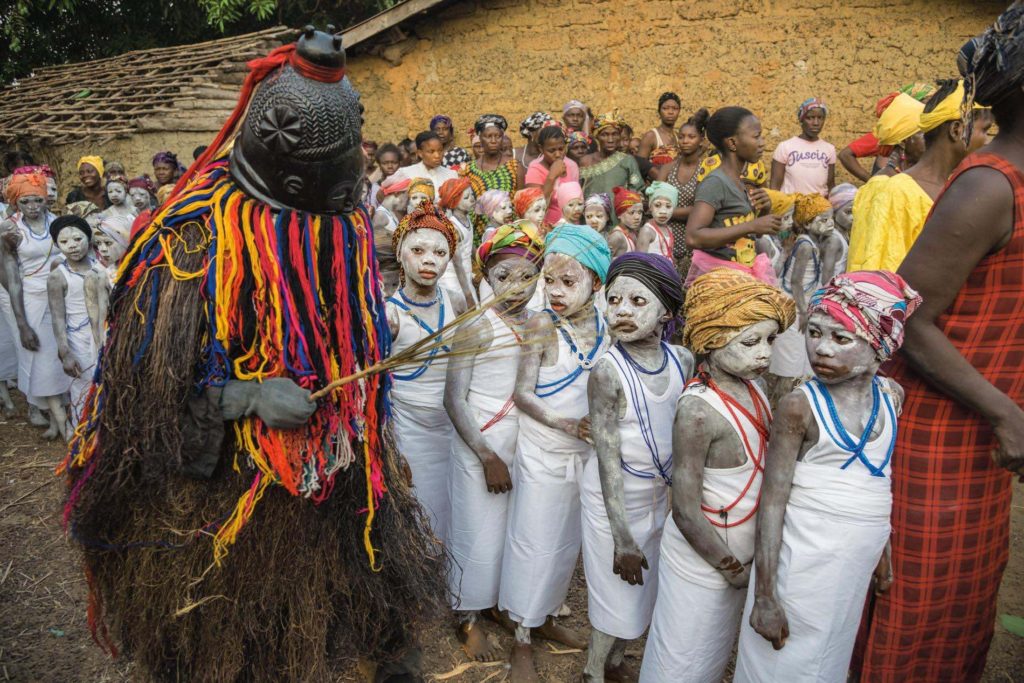

KK is one of Sierra Leone’s few female surfers. She knows girls who have become pregnant and dropped out of school, or ended up with much older men, but she’s always known that she didn’t want that for herself. She listened in school when they told the girls not to have sex too early. Surfing kept her focused.
“Sometimes the girls, their moms don’t have money to pay for them to go to school, so they always go to the boys who give them the money,” KK says. The boys then may expect sexual relationships in return and abandon the girls when they become pregnant, so girls can end up living on the street.
Her mother never had much money, but because of KK’s skill and dedication, she is making her own money and has never needed any boy. She works in the kitchen at the beach restaurant and sometimes sells cookies on the beach. In the mornings she gets up at six or seven, catches a wave if there are good ones, and then heads to school. She’s in class all afternoon into the evening and then returns home to study and cook dinner. KK helps support her mother, giving her some of the money that comes her way.
On a Saturday afternoon back in July, I watched KK stretch on the hot sand at Bureh Beach and then jump fearlessly with her surfboard into a frothy wave in the turquoise water. She paddled and floated, patiently waiting for another high wave. The boys were jumping into the weak waves and crashing. A young, scrawny one made a sign of the cross before diving in. KK yelled with glee as she fell off a wave that burned out.
KK wants to make her own surfboards. Someday she hopes to open a shop to sell them and start up a surf school. “I want to teach other girls,” she tells me.
In the meantime she surfs several days a week, especially in the rainy season, when waves can hover at six feet. KK is working on improving her technique. She believes that if she can get good enough, she can make a career out of surfing. She would like to be a doctor or an accountant but is uncertain whether she will be ready for college. The teachers sometimes don’t teach, and she has difficulty reading.
“If I participate in surfing, I think somebody might come down to the surf club and then they see me and pick me up [to sponsor me],” she says. “Through that, I will always be able to support my family.”
This feature was written by Stephanie Sinclair and originally appeared in National Geographic.

















